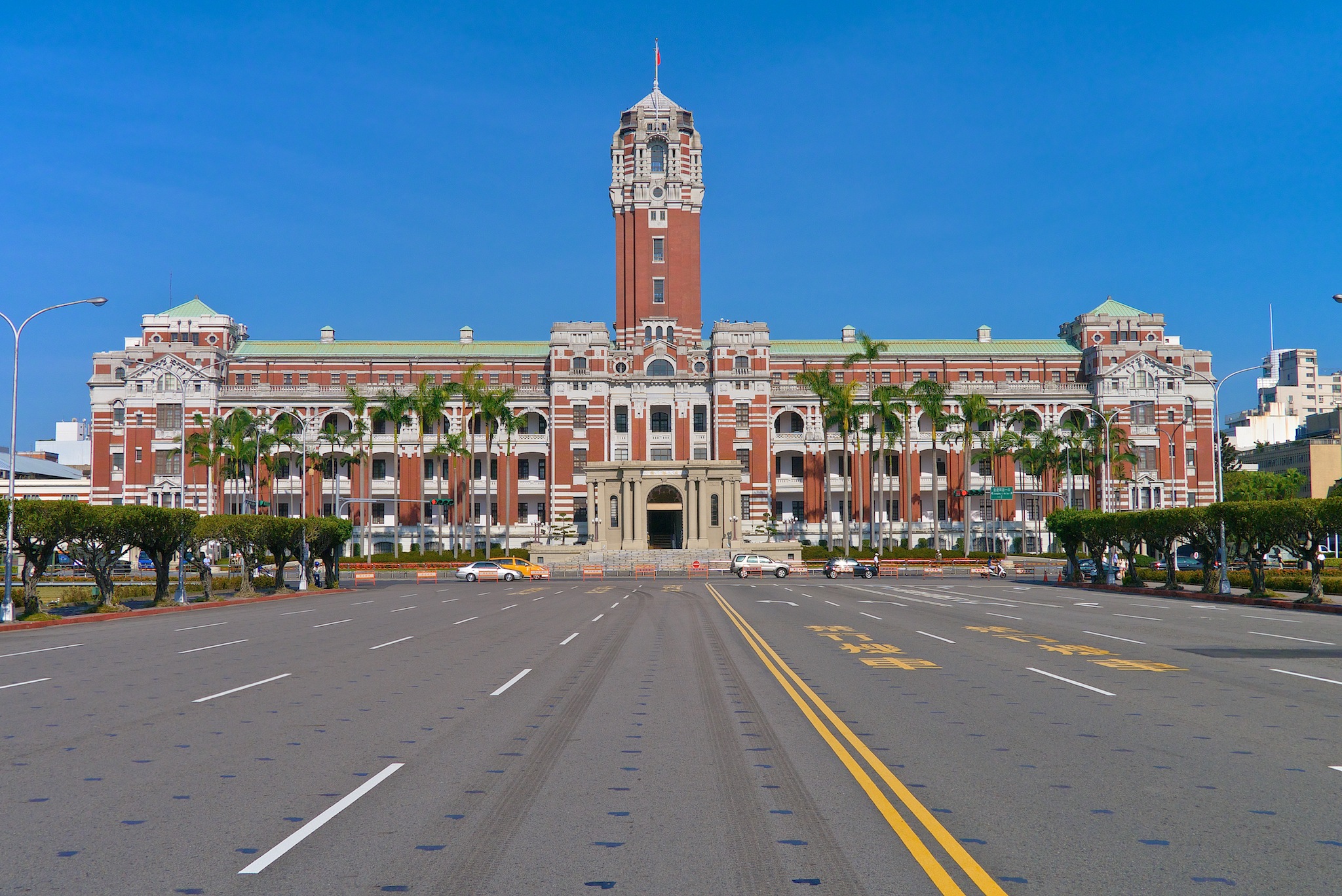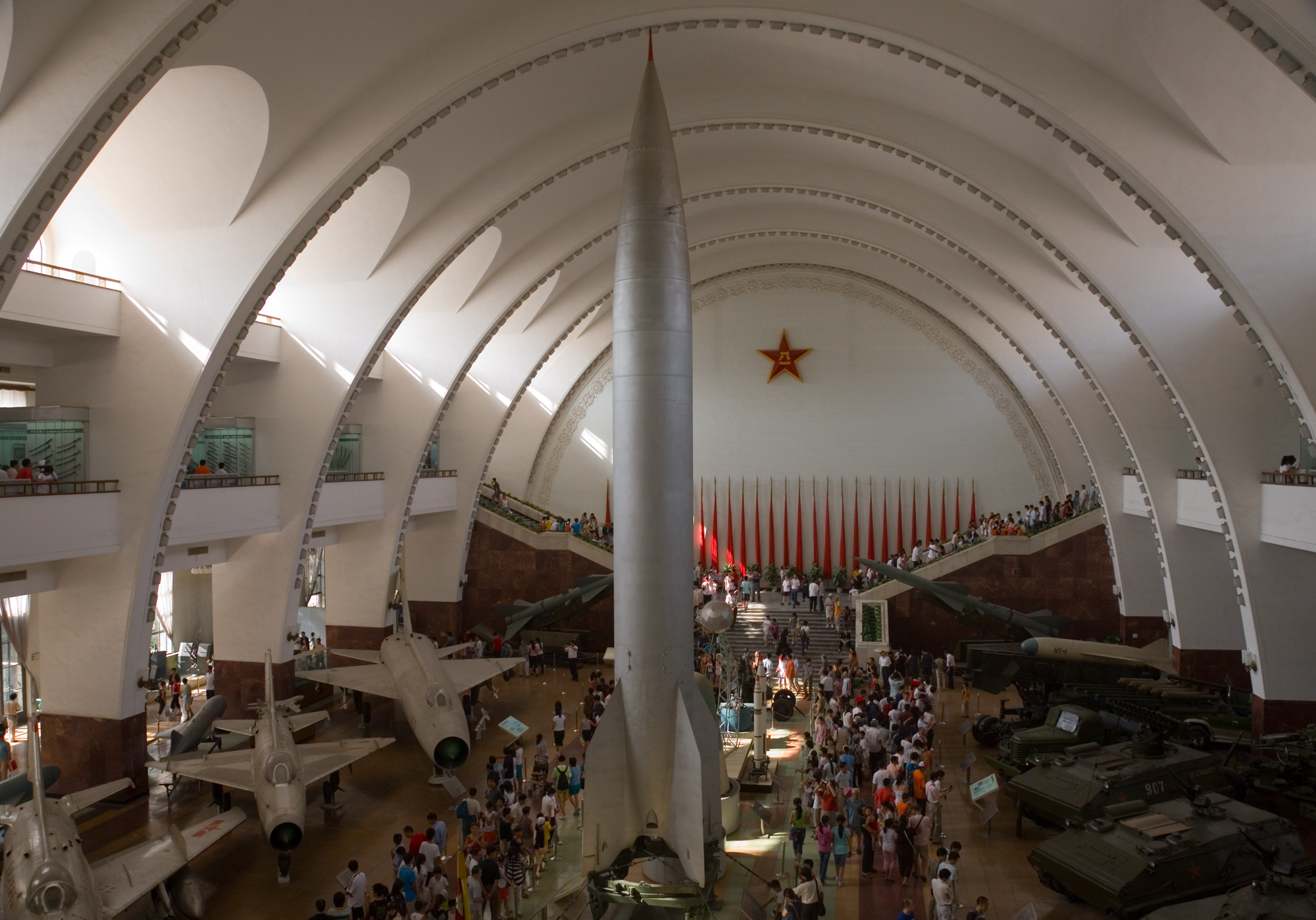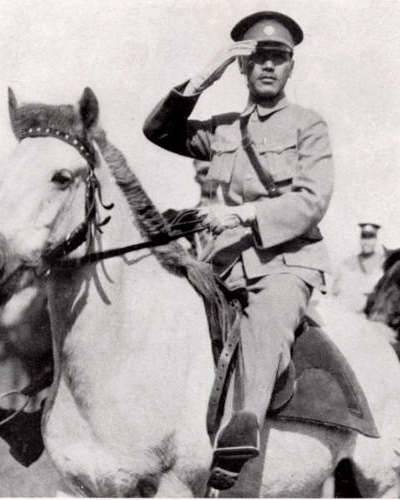|
Republic Of China Armed Forces Museum
The Republic of China Armed Forces Museum (AFM; ) is a museum located on Guiyang Street in the Zhongzheng District of Taipei, Taiwan. It was opened on October 31, 1961, under the administration of the Republic of China Ministry of National Defense Department of History and Translation Office. The Museum aims to show the ROC military heritage of different periods and to inform the public about the military. The museum encompasses 3 floors. Since December 31st, 2021, the museum is now permanently closed. Permanent Exhibits *From the Whampoa Army to the Northern Army *Early Gruelling years in the War of Resistance - Features captured Japanese Military equipment including swords used during the Nanjing Massacre's Contest to kill 100 people using a sword. * Counter Insurgency and Battle of the Taiwan Strait *Modernization of the Military *Weapons Collection Room. Temporary exhibits Upcoming Past exhibits * Army Special Operations Aviation Exhibition (2005) * Japanese Pri ... [...More Info...] [...Related Items...] OR: [Wikipedia] [Google] [Baidu] |
Zhongzheng District
Zhongzheng District (also Jhongjheng District) is a district in Taipei. It is home to most of the national government buildings of the Republic of China (Taiwan), including the Presidential Office, the Executive Yuan, the Control Yuan, the Legislative Yuan, the Judicial Yuan and various government ministries. Overview The district is named after Generalissimo and the late President of the Republic of China Chiang Kai-shek. This district has many cultural and educational sites including the Taipei Botanical Garden, the National Taiwan Museum, the National Museum of History, the National Central Library, National Theater and Concert Hall and the Taiwan Film and Audiovisual Institute. Other museums include the Chunghwa Postal Museum, the Taipei City Traffic Museum for Children, and the Taipei Museum of Drinking Water. Much of the Qing-era city of Taipeh lies within this district. High School and college students frequent the area immediately south of the Taipei Ma ... [...More Info...] [...Related Items...] OR: [Wikipedia] [Google] [Baidu] |
Second Taiwan Strait Crisis
The Second Taiwan Strait Crisis, also called the 1958 Taiwan Strait Crisis, was a conflict that took place between the People's Republic of China (PRC) and the Republic of China (ROC). In this conflict, the PRC shelled the islands of Kinmen (Quemoy) and the Matsu Islands along the east coast of mainland China (in the Taiwan Strait) to "liberate" Taiwan from the Chinese Nationalist Party, also known as the Kuomintang (KMT); and to probe the extent of the United States defense of Taiwan's territory. A naval battle also took place around Dongding Island when the ROC Navy repelled an attempted amphibious landing by the PRC Navy. U.S. Secretary of State Christian Herter (1959-1961) is said to have later referred to the conflict as " the first serious nuclear crisis." Overview The conflict was a continuation of the Chinese Civil War and First Taiwan Strait Crisis. The Republic of China (ROC) had begun to build military installations on the island of Kinmen (Quemoy) and the Ma ... [...More Info...] [...Related Items...] OR: [Wikipedia] [Google] [Baidu] |
Museums In Taipei
A museum ( ; plural museums or, rarely, musea) is a building or institution that cares for and displays a collection of artifacts and other objects of artistic, cultural, historical, or scientific importance. Many public museums make these items available for public viewing through exhibits that may be permanent or temporary. The largest museums are located in major cities throughout the world, while thousands of local museums exist in smaller cities, towns, and rural areas. Museums have varying aims, ranging from the conservation and documentation of their collection, serving researchers and specialists, to catering to the general public. The goal of serving researchers is not only scientific, but intended to serve the general public. There are many types of museums, including art museums, natural history museums, science museums, war museums, and children's museums. According to the International Council of Museums (ICOM), there are more than 55,000 museums in 202 ... [...More Info...] [...Related Items...] OR: [Wikipedia] [Google] [Baidu] |
Museums Established In 1961
A museum ( ; plural museums or, rarely, musea) is a building or institution that cares for and displays a collection of artifacts and other objects of artistic, cultural, historical, or scientific importance. Many public museums make these items available for public viewing through exhibits that may be permanent or temporary. The largest museums are located in major cities throughout the world, while thousands of local museums exist in smaller cities, towns, and rural areas. Museums have varying aims, ranging from the conservation and documentation of their collection, serving researchers and specialists, to catering to the general public. The goal of serving researchers is not only scientific, but intended to serve the general public. There are many types of museums, including art museums, natural history museums, science museums, war museums, and children's museums. According to the International Council of Museums (ICOM), there are more than 55,000 museums in 202 countries ... [...More Info...] [...Related Items...] OR: [Wikipedia] [Google] [Baidu] |
1961 Establishments In Taiwan
Events January * January 3 ** United States President Dwight D. Eisenhower announces that the United States has severed diplomatic and consular relations with Cuba (Cuba–United States relations are restored in 2015). ** Aero Flight 311 (Koivulahti air disaster): Douglas DC-3C OH-LCC of Finnish airline Aero crashes near Kvevlax (Koivulahti), on approach to Vaasa Airport in Finland, killing all 25 on board, due to pilot error: an investigation finds that the captain and first officer were both exhausted for lack of sleep, and had consumed excessive amounts of alcohol at the time of the crash. It remains the deadliest air disaster to occur in the country. * January 5 ** Italian sculptor Alfredo Fioravanti marches into the U.S. Consulate in Rome, and confesses that he was part of the team that forged the Etruscan terracotta warriors in the Metropolitan Museum of Art. ** After the 1960 military coup, General Cemal Gürsel forms the new government of Turkey (25th gov ... [...More Info...] [...Related Items...] OR: [Wikipedia] [Google] [Baidu] |
National Museum Of History
The National Museum of History (NMH; ) is located in the Nanhai Academy in Zhongzheng District, Taipei, Taiwan. After the Republic of China government moved to Taiwan, the National Museum of History was the first museum to be established in Taiwan. History A "National Museum of Historical Artifacts and Fine Arts" was established in a Japanese style building near the Taipei Botanical Garden in 1955. It was renamed "National Museum of History" in 1956 and the building was renovated in a five-floor traditional Chinese Ming and Qing palace style, with four floors for exhibition and staff offices, and one floor for storage. Despite its limited space, the NMH is renowned for its international exhibitions, and proactive and innovative museum development and educational programs. Various conversions of the building have been carried out over the years to adapt it as a modern space fit for the newest exhibition facilities and requirements. The NMH's collection originally comprised the ar ... [...More Info...] [...Related Items...] OR: [Wikipedia] [Google] [Baidu] |
Military Museum Of The Chinese People's Revolution
The Military Museum of the Chinese People's Revolution or China People's Revolution Military Museum () is a museum located in Haidian District, Beijing, China that displays restored military equipment from the history of the People's Liberation Army, up to and including modern-day machinery. One of the Ten Great Buildings erected in celebration of the ten-year anniversary of the founding of the People's Republic of China, construction of the museum began in October 1958 and ended in 1960. Collections The museum's four floors include ten halls, the largest of which is the Hall of Weapons. The Hall's extensive holdings of antiquated weaponry showcase domestic and foreign weapons, including blades, small arms, artillery, tanks, armored personnel carriers, anti-air weaponry, jet fighters, rockets and rocket launchers, and cruise missiles. Foreign weapons include Soviet tanks purchased or donated during the 1950s and 1960s, Japanese weaponry captured during the Second Sino-Japanese ... [...More Info...] [...Related Items...] OR: [Wikipedia] [Google] [Baidu] |
List Of Museums In Taiwan
This is a list of museums in Taiwan, including cultural centers and arts centres. Kaohsiung City * Chung Li-he Museum * Cijin Shell Museum * Fongshan Community Culture Museum * Former British Consulate at Takao * Hamasen Museum of Taiwan Railway * Jiasian Petrified Fossil Museum * Kaohsiung Astronomical Museum * Kaohsiung Hakka Cultural Museum * Kaohsiung Harbor Museum * Kaohsiung Museum of Fine Arts * Kaohsiung Museum of Fisheries Civilization * Kaohsiung Museum of History * Kaohsiung Museum of Labor * Kaohsiung Vision Museum * Meinong Hakka Culture Museum * National Science and Technology Museum * Republic of China Air Force Museum * Soya-Mixed Meat Museum * Taiwan Pineapple Museum * Taiwan Sugar Museum * Takao Railway Museum * Xiaolin Pingpu Cultural Museum * YM Museum of Marine Exploration Kaohsiung * War and Peace Memorial Park and Theme Hall New Taipei City * Fort San Domingo * Jingtong Mining Industry Museum * Ju Ming Museum * Li Tien-lu Hand ... [...More Info...] [...Related Items...] OR: [Wikipedia] [Google] [Baidu] |
Taipei Metro
Taipei Mass Rapid Transit (MRT), branded as Metro Taipei, is a rapid transit system serving the areas of Taipei and New Taipei in Taiwan, operated by the government-owned Taipei Rapid Transit Corporation, which also operates the Maokong Gondola. Taipei Metro was the first metro system ever built in Taiwan. The initial network was approved for construction in 1986 and work began two years later. It began operations on March 28, 1996, and by 2000, 62 stations were in service across three main lines. Over the next nine years, the number of passengers had increased by 70%. Since 2008, the network has expanded to 131 stations and the passenger count has grown by another 66%. The system has been praised by locals for its effectiveness in relieving growing traffic congestion in Taipei and its surrounding satellite towns, with over two million trips made daily. History Proposal and construction The idea of constructing the Taipei Metro was first put forth at a press conference on 28 ... [...More Info...] [...Related Items...] OR: [Wikipedia] [Google] [Baidu] |
Ximen Metro Station
Ximen (, formerly transliterated as Hsimen Station until 2003) is a metro station in Taipei, Taiwan served by Taipei Metro. The station is named after the former west gate of the city, whose location is roughly where the current station is located. Station overview The station is a three-level, underground structure with two island platforms and six exits, allowing possible connections to the shopping areas and the Diary of Ximen hotel. The two platforms are stacked, thus allowing for cross-platform interchange between the Green Line and the Blue Line. Restrooms are inside the entrance area. In November 2010, the daily ridership at Ximen station was 112,000, 統計資訊 > 交通統計月報 > 當期交通統計月報">台北市政府交通局 首頁 > 業務資訊 > 統計資訊 > 交通統計月報 > 當期交通統計月報��另開視窗下載) making it the fourth busiest station on the network, just behind Taipei Main Station, Taipei City Hall and Zhongxiao Fuxing sta ... [...More Info...] [...Related Items...] OR: [Wikipedia] [Google] [Baidu] |
Republic Of China Military Academy
The Republic of China Military Academy () is the service academy for the army of the Republic of China, located in Fengshan District, Kaohsiung. Previously known as the the military academy produced commanders who fought in many of China's conflicts in the 20th century, notably the Northern Expedition, the Second Sino-Japanese War and the Chinese Civil War. The military academy was officially opened on May 1, 1924, under the Kuomintang (KMT), but the first lessons began on June 16, 1924. The inauguration was on Changzhou Island offshore from the Whampoa (Huangpu) dock in Guangzhou, thus earning its name. During the inaugural ceremonies, Sun Yat-sen delivered a speech that was later to become the lyrics of the national anthem of the Republic of China. It has been considered one of the most important institutions of the Republic of China together with the National Chengchi University, which is a prestigious incubator for senior civil service. After the Republic of China go ... [...More Info...] [...Related Items...] OR: [Wikipedia] [Google] [Baidu] |
CBRN Defense
Chemical, biological, radiological and nuclear defence (CBRN defence) are protective measures taken in situations in which chemical, biological, radiological or nuclear warfare (including terrorism) hazards may be present. CBRN defence consists of CBRN passive protection, contamination avoidance, and weapons of mass destruction mitigation. A CBRN incident differs from a hazardous material incident in both scope (i.e., CBRN can be a mass casualty situation) and intent. CBRN incidents are responded to under the assumption that they are intentional and malicious; evidence preservation and perpetrator apprehension are of greater concern than with HAZMAT incidents. A 2011 forecast concluded that worldwide government spending on CBRN defence products and services would reach US$8.38bn that year. Etymology In English the term ''CBRN'' is a replacement for the 1960s–1980s term ''NBC'' (nuclear, biological, and chemical), which had replaced the term ''ABC'' (atomic, biological, and ... [...More Info...] [...Related Items...] OR: [Wikipedia] [Google] [Baidu] |







